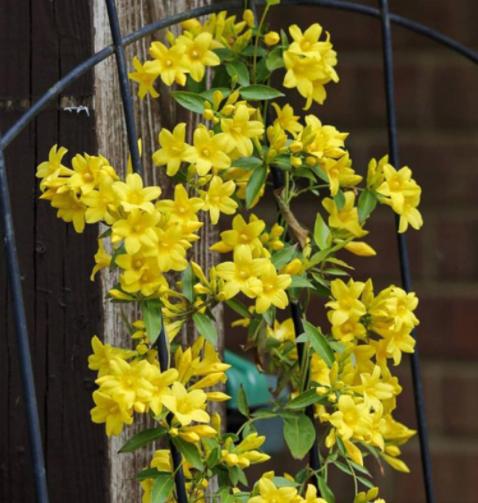
French perfume is also known as Carolina jasmine, yellow jasmine, evergreen hook kiss, North American hook kiss, caroline jasmine, and heartbroken grass. It is a woody evergreen vine ornamental plant of the genus Gelkinaceae. So how to maintain French perfume vine?
- French perfume vine likes loose, breathable and fertile soil, so peat soil or leaf humus can be mixed together before planting.
- French perfume vine likes warmth. The most suitable growth temperature during the day is around 18-28°C, and it can be kept between 10-20°C at night. Too high or too low temperature will affect its growth. New seedlings are not cold-resistant, and will be in a dormant period below -3°C, and biennial old plants can withstand low temperatures of -20°C; the development temperature of flower buds is between 15-20°C, and if it is lower than 10°C, flower buds will wither wither.
- French perfume rattan likes to be exposed to sunlight, so it is generally maintained in a sunny place, and a shady place will affect its growth. Especially in the high temperature and hot summer, it should be properly shaded, not directly exposed to direct sunlight, but not excessively shaded, otherwise the flowering period will be delayed.
- French perfume vines have very simple requirements for water. Generally, it is advisable to see that the soil is dry and wet. If it is dry or wet for a long time, it will affect its growth, especially when there is water accumulation, it will cause the root system to rot.
- French perfume vines can be topdressed many times during the growth process. Compound fertilizers such as nitrogen, phosphorus and potassium can be topdressed during the young seedlings, medium seedlings, large seedlings, and flowering periods, and the mixing ratio of nitrogen, phosphorus, and potassium can be adjusted appropriately according to the growth of each stage.
- If you don’t pay attention to prevention and control in normal times, French perfume vines will easily cause various diseases and insect pests during the growth process. For example, there is anthracnose in summer, powdery mildew in spring and autumn, gray mold in winter, etc., so in the usual fertilization process, trace elements such as calcium and boron can be applied to improve the disease resistance of plants; insect pests are mainly to prevent moths and butterflies Infestation by larvae.
Note: The whole plant is poisonous (the flowers and young leaves are the most toxic), inedible, and the juice has allergic reactions to the skin.
